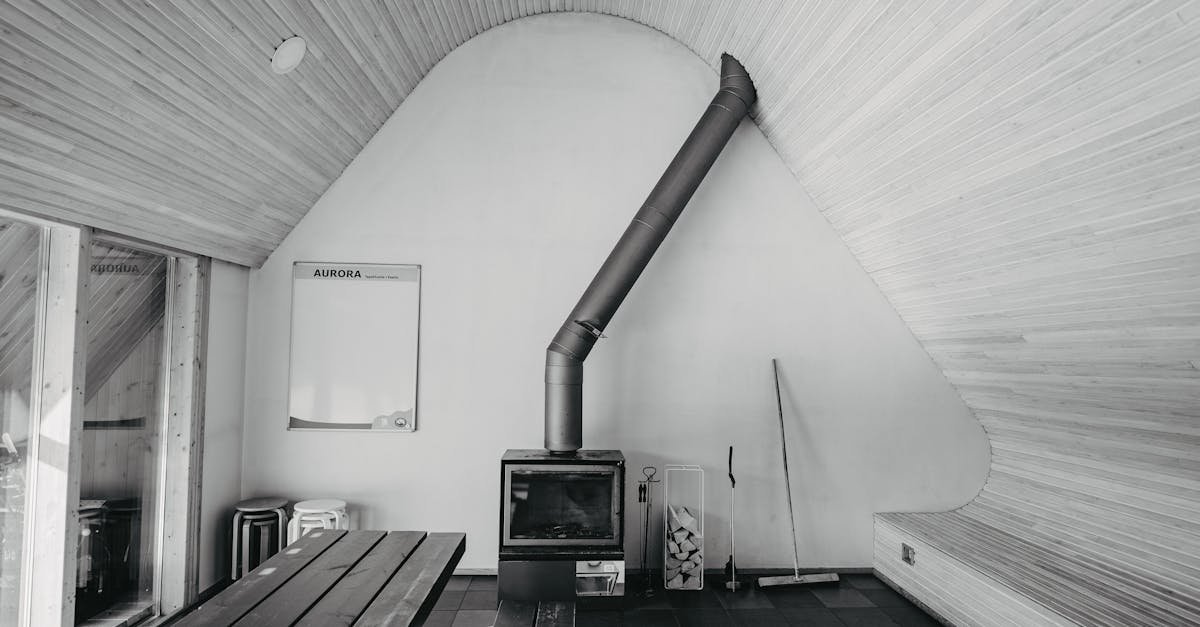Installing an infrared heater can transform your space into a cozy haven. To get started, you’ll need to choose the right location, ensuring it’s near an electrical outlet and away from any obstructions. Next, follow the manufacturer’s guidelines for mounting and wiring to guarantee safety and efficiency.
Once you’ve secured the heater, test it to ensure everything’s functioning properly. With the right approach, you’ll enjoy the benefits of efficient heating in no time. Let’s dive deeper into the steps and tips for a successful infrared heater installation.
Overview of Infrared Heaters
Infrared heaters use radiant heat to warm spaces directly. Instead of warming the air, they heat objects and people. This method provides comfortable warmth quickly. You can install these heaters indoors or outdoors, offering versatility.
You can find various types of infrared heaters. Some are portable, while others are fixed. Portable models provide flexibility; you can move them as needed. Fixed models are ideal for long-term heating; they require a permanent installation location.
Infrared heaters come with multiple power levels. Choose a power level based on room size and heating needs. For example, a 1500-watt heater suffices for most small to medium-sized rooms. Larger spaces may require multiple heaters or higher wattage models.
Installation typically follows simple steps. You need to choose a location with easy access to an electrical outlet. Ensure the area is free from obstructions. Follow the manufacturer’s instructions for safe mounting. Always check local building codes for compliance.
Performance matters with infrared heaters. They provide instant warmth, reducing energy costs compared to traditional heating systems. Expect savings when using them for extended periods. Properly installed infrared heaters offer efficient heating solutions for your space.
Benefits of Infrared Heater Installation
Infrared heater installation offers various advantages that enhance comfort and health at home. Understanding these benefits helps you see why infrared heaters are a smart choice for heating your space.
Energy Efficiency
Infrared heaters provide excellent energy efficiency for heating your rooms.
- Direct Heating: Infrared heaters use far-infrared waves that heat objects and people directly. This method avoids warming large volumes of air, making it more efficient. You save energy since the heater doesn’t waste heat on unused spaces.
- High Efficiency Rating: These heaters often reach efficiency ratings between 100% and 115%. Compared to traditional heating systems, this higher efficiency reduces heat loss from draughts and improves comfort.
- Zoning Feature: You can strategically place infrared panels in high-use areas, reducing the need to heat empty rooms. This targeted heating approach maximizes energy savings by focusing warmth where you need it most.
Health Benefits
Infrared heaters not only keep you warm but also promote better health.
- Improved Circulation: The heat from infrared systems enhances blood circulation. Better circulation can help alleviate pain and promote healing.
- Reduced Dust and Allergens: Unlike conventional heaters, infrared heaters don’t circulate air, reducing dust and allergens. You keep indoor air cleaner and healthier.
- Moisture Retention: Infrared heating maintains moisture levels in your skin and respiratory system. This aspect can prevent dryness and irritation, especially during colder months.
Opting for infrared heaters offers advantages for energy savings and personal well-being. These systems present efficient solutions to keep your space warm and healthy.
Installation Process
Installing an infrared heater requires careful planning and the right tools. Follow these steps for a smooth installation.
Preparing the Space
Preparing the space enhances heater efficiency. Choose the right location. Install heaters in areas where you spend the most time, like living rooms and bedrooms. Keep heaters away from combustible materials, such as curtains and furniture. Clear obstructions in the area. Identify and remove any furniture that blocks the heater’s line of sight to heated surfaces. Consider your room layout. Assess high-traffic areas or cold spots to ensure effective heat delivery.
Necessary Tools and Materials
Gather the necessary tools and materials before starting. You’ll need:
- Drill: For mounting the heater.
- Screwdriver: For securing brackets.
- Stud Finder: To locate wall studs.
- Level: Ensure the heater is straight.
- Measuring Tape: For precise placements.
- Wire Connectors: To secure electrical connections.
- Safety Gear: Gloves and goggles for protection.
- Read Manufacturer Instructions: Always start by reviewing the manufacturer’s guidelines.
- Select Location: Choose a wall or ceiling that meets guidelines.
- Mark the Installation Spot: Use a pencil for clear marking based on measurements.
- Find Wall Studs: Use a stud finder to ensure secure mounting.
- Drill Holes: Create holes for screws, ensuring they align with studs.
- Attach Brackets: Secure mounting brackets to the wall.
- Install the Heater: Hang your infrared heater on the brackets.
- Connect Wires: Follow wiring instructions carefully. Use wire connectors to secure connections.
- Test the Heater: Turn on the heater to ensure it’s functioning properly.
Following these steps helps ensure a safe, effective installation of your infrared heater.
Safety Considerations
Safety comes first when installing infrared heaters. Follow these guidelines to ensure a safe setup.
Clearances to Combustibles
Maintain proper clearances for safety. Keep infrared heaters at least 30 centimeters (12 inches) away from any combustible objects. This prevents fire hazards. Always post signs that indicate the maximum stacking height for combustible items nearby. Adhering to clearance regulations ensures a safer environment.
Electrical Safety
Focus on electrical safety during installation. Hire qualified professionals to handle all electrical connections. Always follow the manufacturer’s guidelines for wiring and mounting. Regularly check the heater for any signs of damage. Keep the power source away from water to prevent electrical shocks or shorts.
Proper Ventilation
Ensure proper ventilation for optimal performance. Infrared heaters may not require much airflow, but adequate ventilation helps maintain comfort. Avoid blocking air paths around the heater. If used in enclosed spaces, monitor for heat buildup and adjust airflow as necessary. Proper ventilation enhances efficiency and reduces the risk of overheating.
Maintenance Tips for Infrared Heaters
Caring for infrared heaters ensures they perform well and last longer. Follow these maintenance tips for optimal results.
Regular Cleaning
Regular cleaning boosts efficiency and heat output. Dust and dirt can collect on the surface. Use a soft cloth or vacuum with a brush attachment to remove grime carefully. Clean units at least monthly for best performance.
Inspections
Inspections help spot issues early. Check connections and wires for wear or damage. Look for any signs of corrosion or loose parts. Perform visual inspections every few months to prevent bigger problems.
Electrical Checks
Electrical checks ensure safety and functionality. Verify that the voltage aligns with the heater’s requirements. Use a multimeter to check the current and voltage levels. If readings deviate from specs, consult a professional.
Optimal Positioning
Optimal positioning enhances heat distribution. Make sure nothing obstructs the heater’s direct line of sight. Avoid placing furniture or decor in front of the unit. Open spaces allow infrared rays to spread effectively.
Seasonal Maintenance
Seasonal maintenance prepares the heater for changes in temperature. Before the winter season, inspect all components, including the power supply. Check that the installation and mounting are secure.
Professional Servicing
Professional servicing offers peace of mind. Schedule annual check-ups with a trained technician. They’ll inspect wiring and components thoroughly to ensure safe operation.
Efficient Usage
Efficient usage saves energy and boosts effectiveness. Don’t leave heaters running in empty rooms. Set timers or use programmable features to heat spaces only when needed.
Manufacturer Guidelines
Always follow manufacturer guidelines. Adhere to the instructions for cleaning and care. Knowing the specific recommendations for your model helps maintain warranty coverage and enhances longevity.
Conclusion
Installing an infrared heater can significantly enhance your comfort and well-being. By carefully selecting the right location and following the manufacturer’s guidelines, you can ensure a safe and efficient setup. Remember to test the heater after installation to confirm it’s working properly.
Regular maintenance and inspections will help keep your heater running smoothly and efficiently. With proper care, you’ll enjoy the benefits of energy savings and improved air quality. Embrace the warmth and comfort that infrared heating brings to your space and enjoy a healthier environment for you and your family.








